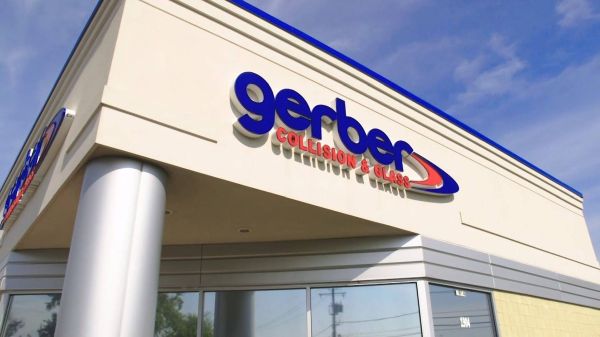Tim O’Day, president and CEO of Boyd Group Services, parent company of Gerber Collision & Glass, referred to his company as “one of the better users of alternative parts” in a presentation this spring at the Automotive Body Parts Association annual convention.
“But right now, we’re more reliant on OEM parts than we’ve ever been, which is unfortunate,” O’Day told the non-OEM parts manufacturers and distributors at the event. “It negatively impacts our profitability, and it drives repair costs up for our customers. So hopefully the aftermarket will figure out how to balance out supply so that we can buy the parts from you that we want to buy.”
O’Day acknowledged that currently even OEM parts are often unavailable, and he doesn’t foresee a quick end to supply chain issues.
“Last year, we probably thought maybe the beginning of the second quarter of this year, but I haven’t seen it,” he said. “I’ve heard temporary positive signs, but nothing that’s systematic that’s going to drive the change we need. So I think we’re probably in for a couple of years of challenging times.”
When asked to compare supplier service levels, O’Day said “problems with parts that come in incorrectly is much, much lower with OEM than it is with the aftermarket.
“I think if you talk to a parts manager or estimator at one of our stores, if price and margin were equal, they would buy the OE part because it tends to be reliable a high percentage of the time,” O’Day said. But he noted the gross profit margin on non-OEM parts is better, so “our staff is motivated both in terms of how we get measured by our insurance partners, and in how it drives our profitability, to identify and source higher-margin, lower-cost alternative parts.”
O’Day said the company is working toward centralized parts ordering for its more than 800 shops in North America.
“When we leave the buying decision at a local level, there’s sometimes influences that aren’t consistent with what our objectives are,” O’Day said. “It could be something as simple in the old days as ‘I got tickets to the ballgame tonight, so I’m going to buy parts from this supplier,’ to something worse than that, that may not be good for our business. The direction we’re moving is to establish contractual relationships in writing with a supplier.”
Part of that agreement will be all electronic parts ordering.
“We’re going to get to the point where if you do business with us, and one of our stores calls you and says, ‘Deliver me this part, I need it this afternoon,’ if you don’t get the order electronically, I don’t want you to deliver it,” O’Day said. “Because what’s going to happen is you’re going to deliver the part. I’m going to put it on the car, and I’m never going to charge my customer for it. And 60 days from now, you’re going to come back to me and say, 'You owe me for that part, because you didn’t get it in your payables system and you haven’t paid for it yet.’
"So it’s a huge loss for me when we do that. So we want to do business with suppliers that are connected electronically,” with ordering, invoicing and payment all handled electronically.
O’Day also discussed the technician shortage impacting all collision repair businesses. He serves on the Board of Directors for I-CAR, and said the segment of the industry renewing its I-CAR Gold Class designation in 2019 averaged 9.5 technicians per shop.
“In the most recent round of renewals, the average shop has 7.5 technicians,” O’Day said. “So about a 17 or 18% reduction in workforce. It’s just a highly disruptive environment. And there’s really no short-term solution.
"My view, and most of the repairers I’ve spoken to share it, is the only way we’re going to build our workforce is by paying more money to that workforce, pulling them from other industries," O'Day said. "The only way we can do that is through pricing. It’s going to cause increased premiums for vehicle owners. But otherwise we’re not going to solve our customers' problem and get their cars repaired on a timely basis.”
He said the industry lacks “a formal, universal way” to work with students coming out of collision repair training programs to build their skills.
“They come into our industry, and because we don’t train them properly to move them to the next level, we lose them to other industries,” he said.
To that end, he said, Gerber created an 18-month technician apprenticeship program for students coming out of school or for internal candidates working as a porter or car-washer.
“We spend tens of thousands of dollars per trainee, but they come out with pretty good skills after 18 months,” O’Day said. “We’ve made a commitment to more than double the size of that program this year. But I think in the long run, we can’t do it alone. We really need the majority of collision repair shops to make the same type of commitment, and do it in an organized way so these students grow and are successful in our industry.”
Another “area of opportunity” he said Gerber is “pursuing pretty aggressively” is improving the “diversity of our industry,” working to attract more women, Black or Asian Americans and other minority groups.
“We’re doing a lot to create an inclusive environment that will allow us to successfully recruit people who don’t look like me, and build our workforce with greater diversity,” O’Day said. “Because if we go after the same group that we’ve always been targeting, we’re never going to solve the problem, and we’re not going to be as good of a company. So we have a very strong commitment to improving diversity.”










John Yoswick